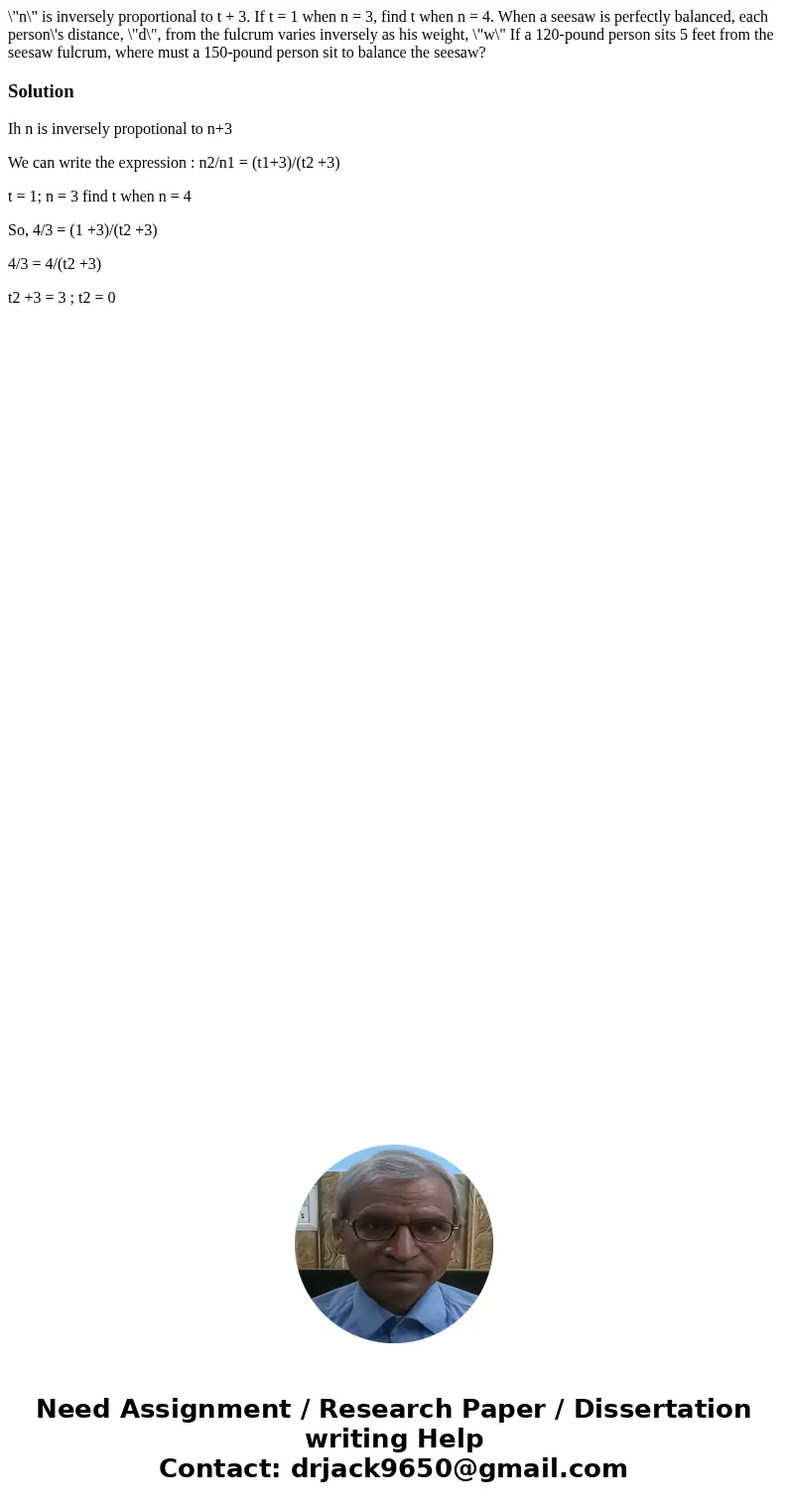n is inversely proportional to t 3 If t 1 when n 3 find t
\"n\" is inversely proportional to t + 3. If t = 1 when n = 3, find t when n = 4. When a seesaw is perfectly balanced, each person\'s distance, \"d\", from the fulcrum varies inversely as his weight, \"w\" If a 120-pound person sits 5 feet from the seesaw fulcrum, where must a 150-pound person sit to balance the seesaw?
Solution
Ih n is inversely propotional to n+3
We can write the expression : n2/n1 = (t1+3)/(t2 +3)
t = 1; n = 3 find t when n = 4
So, 4/3 = (1 +3)/(t2 +3)
4/3 = 4/(t2 +3)
t2 +3 = 3 ; t2 = 0

 Homework Sourse
Homework Sourse